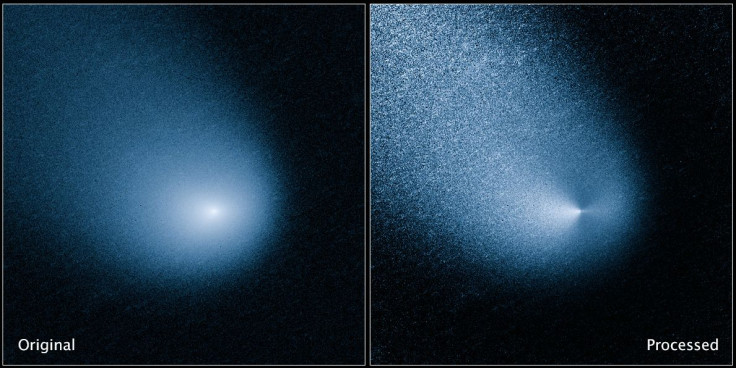Comet Siding Spring Close Flyby Of Mars Set For Sunday

Comet Siding Spring will pass incredibly close to Mars Sunday and NASA will have a front-row seat. NASA's fleet of rovers, orbiters and telescopes will observe the comet in great detail, providing new insights into the behavior of a comet as well as the history of the universe.
Comet Siding Spring, also known as C/2013 A1, is making what is likely its first trip into the solar system and around the sun. The comet is believed to be from the Oort Cloud, a roughly spherical "shell" around the solar system 5,000 to 100,000 astronomical units (an AU is the mean distance from the Earth to the sun, 93 million miles).
While other comets have traveled into the solar system from the Oort Cloud, such as comet Halle Bopp and Halley's Comet, Comet Siding Spring will be passing just 87,000 miles from Mars and will be easily observed by NASA's spacecraft, including MAVEN and the Mars Reconnaissance Orbiter, and the Curiosity and Opportunity rovers.
"This is a cosmic science gift that could potentially keep on giving, and the agency’s diverse science missions will be in full receive mode," John Grunsfeld, astronaut and associate administrator for NASA’s Science Mission Directorate said in a statement. NASA has maneuevered its rovers and orbiters away from potential danger as the comet sheds dust and debris on its journey around the sun. Objects in the Oort Cloud are roughly 4.6 billion years old and since Comet Siding Spring has never made its way into the inner solar system, the object will give researchers a good look at the early universe and planet formation.
Gas composition, comet structure, size and rotation of the nucleus and the comet's interaction with the Martian atmosphere are just a few things NASA will be able to observe. Ground-based telescopes as well as the Hubble, Chandler and Spitzer telescopes will also observe Comet Siding Spring. The observations will help determine the comet's orbit and when it will make its next trip into the inner solar system.
The comet will make its approach to Mars Sunday at 2:27 p.m. EDT. Viewing Siding Spring will be a bit difficult but possible for individuals with telescopes in the Southern Hemisphere, especially Australia and South Africa.
© Copyright IBTimes 2025. All rights reserved.






















